 Situated on 12 acres, the New Orleans Botanical Garden is a little gem in City Park very near the New Orleans Museum of Art and across the street from the Besthoff Sculpture Garden. It is home to more than 2,000 varieties of plants from around the world, numerous pieces of sculpture, and a very unique train garden. The garden grew from a project of the WPA during the Great Depression and was known as the City Park Rose garden when it opened in 1936 as New Orleans’ first public classical garden. It is said to be one of the few remaining examples of public garden design from the WPA and Art Deco Period.
Situated on 12 acres, the New Orleans Botanical Garden is a little gem in City Park very near the New Orleans Museum of Art and across the street from the Besthoff Sculpture Garden. It is home to more than 2,000 varieties of plants from around the world, numerous pieces of sculpture, and a very unique train garden. The garden grew from a project of the WPA during the Great Depression and was known as the City Park Rose garden when it opened in 1936 as New Orleans’ first public classical garden. It is said to be one of the few remaining examples of public garden design from the WPA and Art Deco Period.
A map of the garden, available at the ticket booth, shows that garden rooms were laid out along an axis and include a Japanese Garden, Rose garden, Palm Court and a conservatory.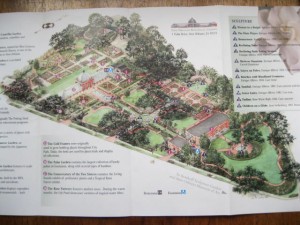
Spring comes early to New Orleans and our visit there the first week in April allowed us to see a garden full of blooms. The Zemurray Azalea and Camellia Garden contained many azaleas that bloom in spring and again in the fall, as well as camellias and several varieties of magnolias. Enrique Alferez’s statue “Women in a Huipil” stands among the flowers.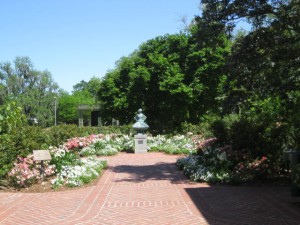
Another statue by Alferez, “The Flute Player” stands in a pond that occupies the center of the garden.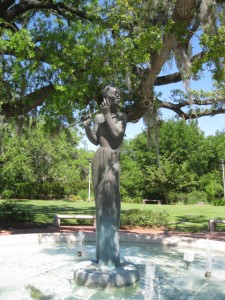
Beds on the sides were a riot of color with orange and red snapdragons, bright pink Dianthus, and blue Johnny jump-ups.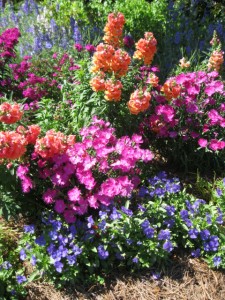
Firefly sculptures are tucked into the flower beds.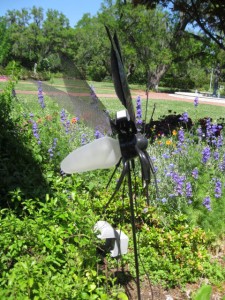
The Lord and Taylor Rose Garden contains a collection of both modern and antique roses, the modern roses arranged in parterres bordered by clipped Yaupon holly.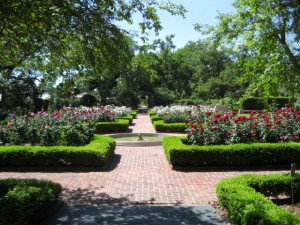
Modern roses such as Iceberg, seen here, do not do well in the heat and humidity of New Orleans and bloom best April to June and then again in the fall from October to December.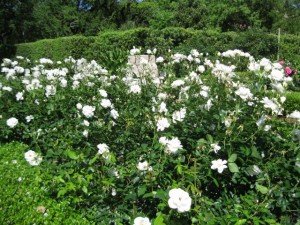
An arbor that serves as an entrance to the rose garden is filled with staghorn ferns.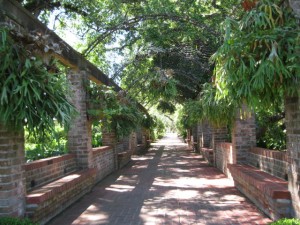
The variety is amazing; some ferns with fine fronds;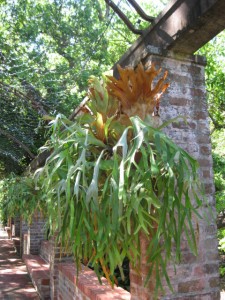
Others with large coarse fronds.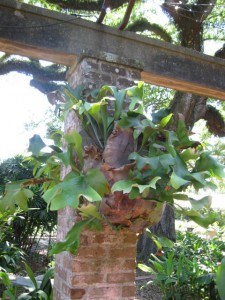
Shrubs and trees are featured in a nearby area.
This weeping bald cypress was a standout.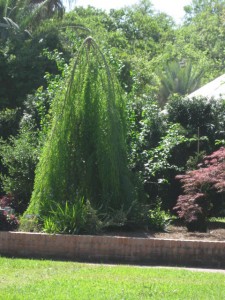
The Palm Court contains a collection of palms that are hardy in Louisiana, and clumping and slow spreading bamboos.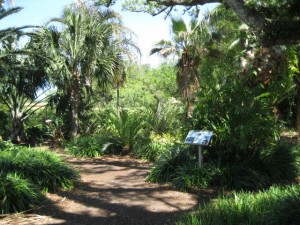
Ferns, grasses, groundcovers, bromeliads, and other exotic plants form a lush under story. This exquisite lily brightens the scene with its color and shape.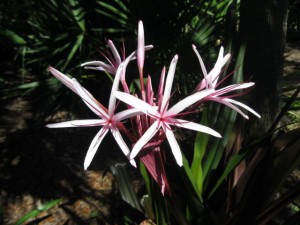
Long vistas catch the eye at numerous places. Here, the grass gate stands at the original entrance to the garden.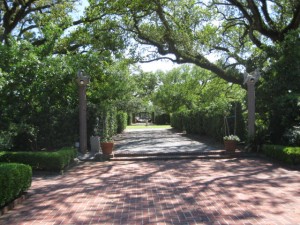
A sundial stands in the center of the former formal garden.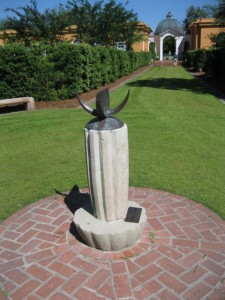
Around the sundial, whimsical benches offer rest.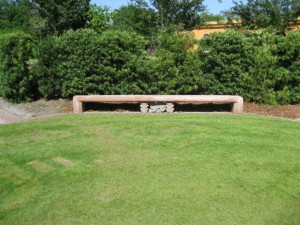
Each bench as a woodland creature underneath.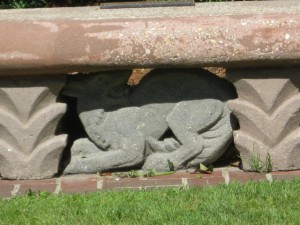
The Conservatory of the Two Sisters is a ‘must see”. The area just outside it includes a large pool with water lilies and a statue called “Undine” by Rose Marie Huth.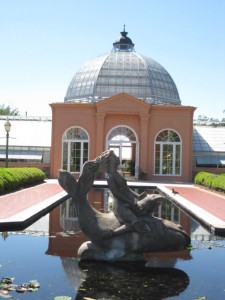
Formal rose beds lie around the pool.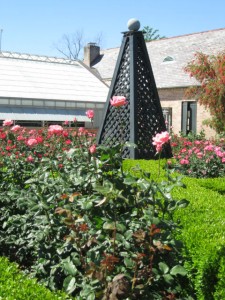
Inside, the conservatory houses a tropical rain forest on one side.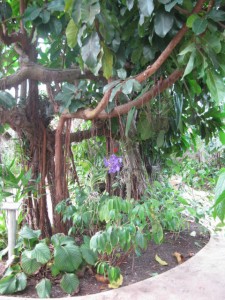
Vanda orchids add bright color.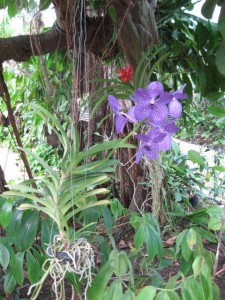
The waterfall adds moisture and enhances the ambiance.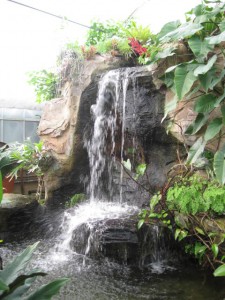
On the other side of the conservatory and study of living fossils enfolds.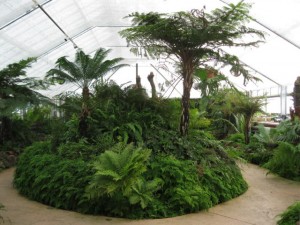
Plants such as mosses, ferns, and cycads that have lived on the earth since the time before flowering plants appeared are featured.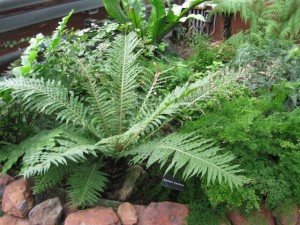
Fossils of these plants are also displayed.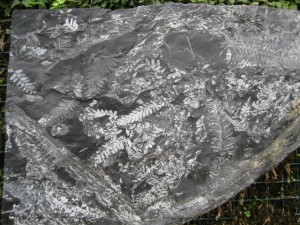
Behind the conservatory the practical features of the garden are presented. Originally the plants for the garden were grown in the cold frames stand but now they are used as a trial or display area for evaluating.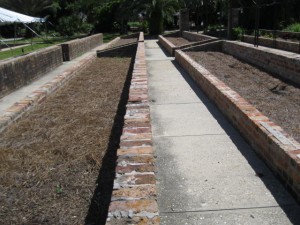
Behind the cold frames lies the Demonstration Garden where vegetables are grown with an assortment of other garden plants.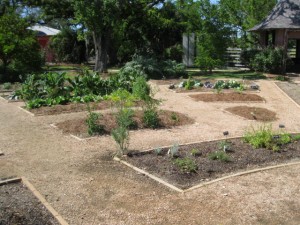
A small but beautiful Japanese garden lies close by.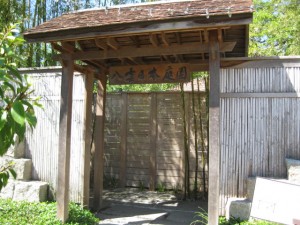
The visitor enters by means of a pathway through bamboo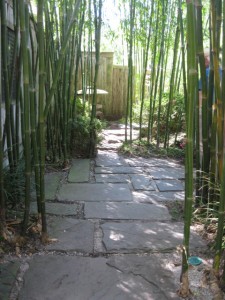
A traditional Japanese lantern stands in a corner.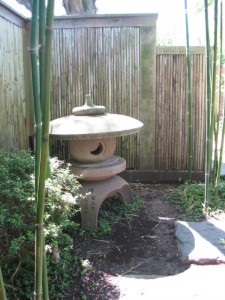
Insides, a tea house serves as a focal point.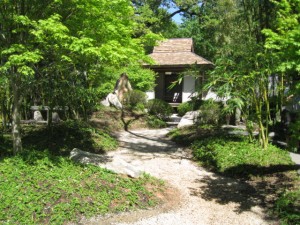
Carefully arranged rocks take the place of sculpture.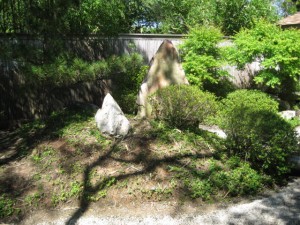
A specimen tree adds to the eastern feeling of the garden.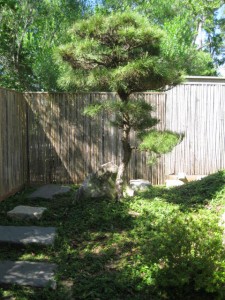
But the Japanese garden is not the most exotic garden here; that honor belongs to the Train Garden. This garden boasts over 1,300 feet of track that winds its way around New Orleans as it existed in the 1800s.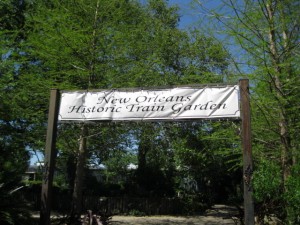
The garden is laid out so that the visitor is walking in the water along the coastline of New Orleans.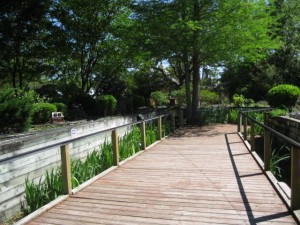
The train track travels through the various neighborhoods of the times, with recognizable buildings made of bark, twigs, acorns, and other botanical materials. Here we see some buildings in the Garden District.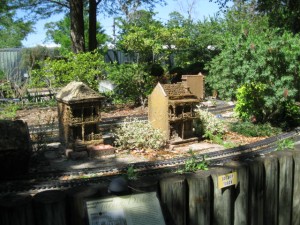
Even the cemeteries of New Orleans are included.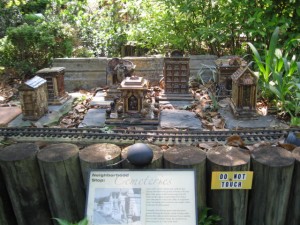
The G-scale trains were not running when we visited but we read that they do run on weekends and for special events.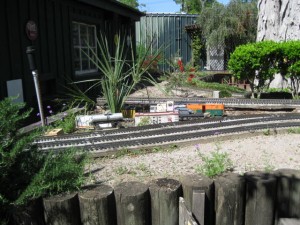
The diversity of this garden offers something for everyone. Whether you like roses, fossils, vegetables, nature, sculpture, or trains, you will find something of interest at this garden. This is a great place to spend a couple of hours and then you have the option of going on to one of the other outstanding attractions in the park surrounding it.
